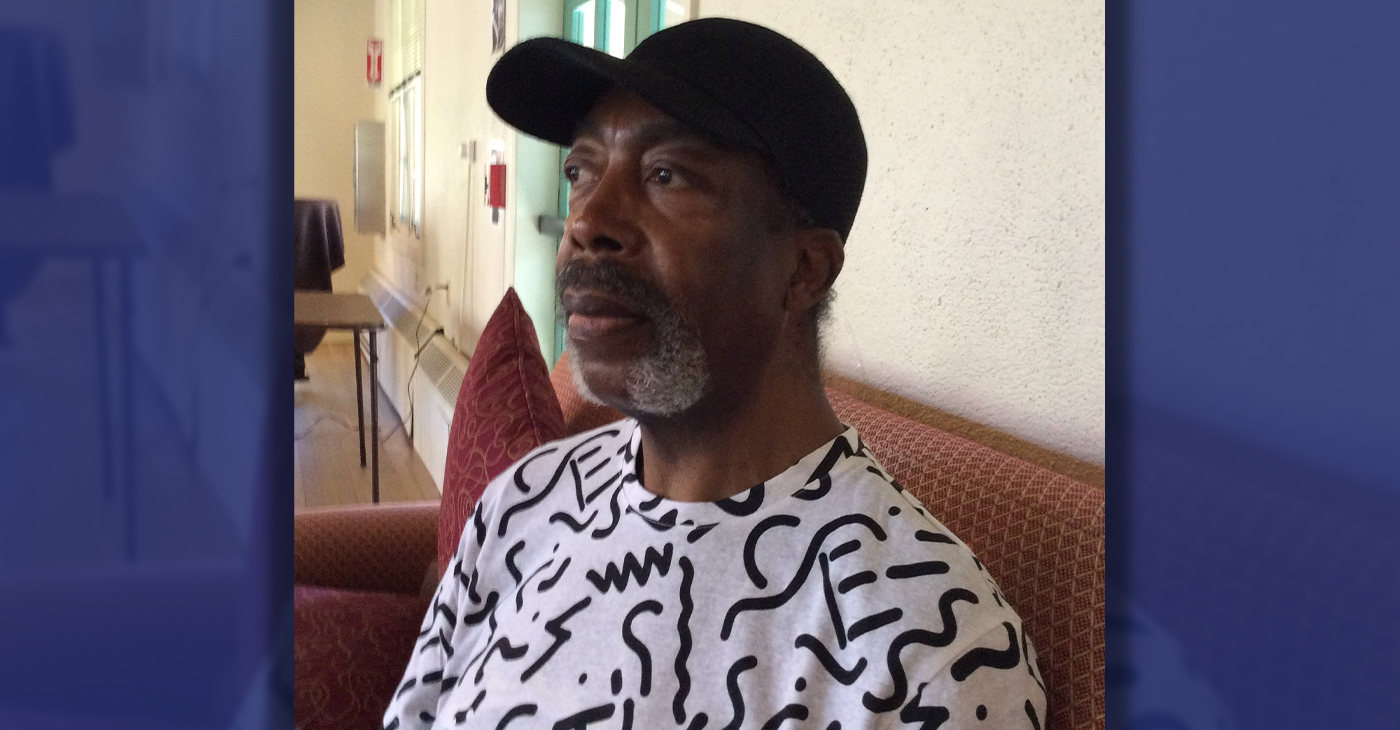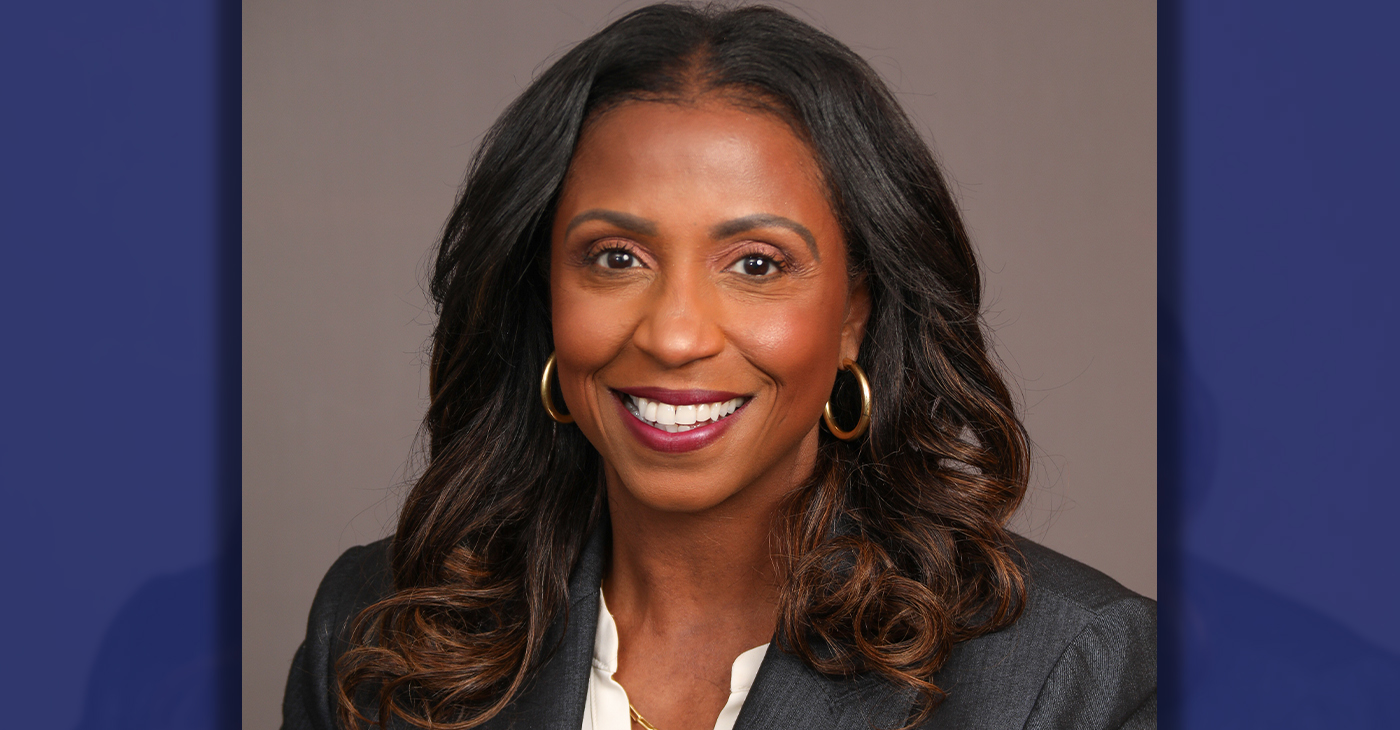Business
Car Review: Lexus GS 350 F Sport
By Frank S. Washington
NNPA Columnist
HOUSTON (NNPA)—After more than a week, it felt like we drove the Lexus GS 350 F Sport sedan through every one of the 600 square miles that comprise this city. And we only found a few irks to complain about.
Actually, we drove the Lexus GS 350 F Sport to New Orleans and back here. After 10 days and almost 1,000 miles, we came away with a healthy respect for the road worthiness of the midsize luxury sedan. Except for going over some rather spacious expansion joints on the causeways that slice through southern Louisiana, not once did any road noise make its way into the cabin.
Although the Lexus GS F Sport has an available rear-wheel-biased all-wheel-drive system, how often are you going to get inclement weather beyond heavy rain in this region? Anyway, that is a long-winded way of saying that we had a rear-wheel-drive model of the F Sport and it was just fine.
Still, the car had what Lexus called an adaptable variable suspension that came with its sport package. Settings were normal, sport, sport +, eco and snow. Even though regional gas prices ranged from $2.47 to $2.62, they were cheaper with cash, we set the car in Eco mode because of the distances involved on the trip.
That mode set throttle mapping and seat heating and climate control systems for optimal fuel economy. In ECO mode, the instrument meter lighting changed to blue. But the sport package is more than an extra setting, sport +, in the drive mode selector. We had a full tank of fuel when we left, we filled the tank again once we arrived and we filled it once more for the return trip. The visit to New Orleans included a side trip to Hammond, just North of Lake Pontchartrain, and the place we gassed up the second time.
Our test car had an EPA rating of 19 mpg in the city and 20 mpg on the highway. Considering the 1,000 miles we drove, it was relatively easy on fuel.
The sport package was comprised of chassis enhancements, a sport tuned suspension, 19-inch alloy wheels with summer tires, larger front brakes that were appreciated with all the sudden slowdowns from Interstate speeds because of traffic congestion and high friction brake pads. Our test car also had lane keep assist and a rearview camera.
Of course there were firmer springs, thicker stabilizer bars and special bushings.
Although our test car was not equipped with it, the Lexus GS 350 F Sport has available dynamic rear steer that can add up to two degrees of rear wheel turn that enhances cornering and lane changes.
No matter whether we were traveling at 80 mph or 8 mph, our 3.5-liter engine performed flawlessly. It generated 308 horsepower, 277 pound-feet of torque and it was mated to an eight-speed transmission. There was no herking or jerking, no searching for the correct gear and the car accelerated swiftly when needed.
We thought the side view mirrors could have been shaped differently; they didn’t provide a wide enough view of what was on the side of the car. But the blind spot alert system made up for that lack. And in an age of portable electronic gadgets, we thought the car could have used more than one USB jack.
However, these gripes were mere inconveniences that were more than offset by the driver experience of the Lexus GS 350 F Sport. Our test car was swathed with a black perforated leather interior. The front seats were heated as well as cooled and the driver’s seat was 18-way power. Aluminum pedals and brushed aluminum trim completed the interior’s sport motif.
The car featured Lexus’ 12.3 inch dual information screen. We spent a lot of time in navigation mode and that gets us to our third quibble. The navigation system will not mute the audio system when giving directions to the driver. A moderate decibel level when playing the radio will drown out the directions being giving by the voice of the navigation system. Yes, there is a map with a designated route but you can miss those directions as well, if your eyes are on the road where they are supposed to be.
Still, the system had predictive traffic information that included detour preview, ETA calculation and low-fuel coordination with available fuel stations. We didn’t avail ourselves of the traffic information in the navigation system and ended up getting it off the traffic app in the Enform App Suite.
Either or, this trips marks the last time will travel back to Houston from the Big Easy on the Sunday after Turkey Day. The traffic was as thick as molasses in some places.
The information system had the usual compliment of stuff: Bluetooth, satellite radio, media capability, meaning it would and did play stations off the Pandora app on our smartphone and there were voice controls.
Other equipment on the Lexus GS 350 F Sport included adaptive cruise control, land departure warning, pre-collision warning, a 17-speaker 835-watt premium audio system, a rearview camera and folding side mirrors.
Our Lexus GS 350 F Sport was a quality midsize sedan in one of the most competitive segments of the luxury market. The car had a base price of $47,700. Add options that included the sport package and a $910 freight charge and the final tab was $60,784.
Frank S. Washington is editor of AboutThatCar.com.
###
Bay Area
Mayor Breed Proposes Waiving City Fees for Night Markets, Block Parties, Farmers’ Markets, Other Outdoor Community Events
Mayor London N. Breed introduced legislation on April 26 to encourage and expand outdoor community events. The first will waive City fees for certain events, making them less costly to produce. The second will simplify the health permitting for special event food vendors through the creation of an annual permit. Both pieces of legislation are part of the Mayor’s broader initiative to bring vibrancy and entertainment to San Francisco’s public right of ways and spaces.

Mayor’s Press Office
Mayor London N. Breed introduced legislation on April 26 to encourage and expand outdoor community events.
The first will waive City fees for certain events, making them less costly to produce. The second will simplify the health permitting for special event food vendors through the creation of an annual permit. Both pieces of legislation are part of the Mayor’s broader initiative to bring vibrancy and entertainment to San Francisco’s public right of ways and spaces.
Outdoor community events are integral to San Francisco’s vibrant culture and sense of community. These events include night markets, neighborhood block parties and farmers markets, and bolster the City’s economy by supporting local businesses and attracting tourists eager to experience San Francisco’s unique charm and food scene.
They offer residents, workers and visitors, opportunities to engage with local artists, musicians, and food vendors while enjoying the San Francisco’s stunning outdoor spaces and commercial corridors.
The legislation will allow for more and new community gatherings and for local food vendors to benefit from the City’s revitalization.
“San Francisco is alive when our streets are filled with festivals, markets, and community events,” said Breed. “As a city we can cut fees and streamline rules so our communities can bring joy and excitement into our streets and help revitalize San Francisco.”
Fee Waiver Legislation
The events that can take advantage of the new fee waivers are those that are free and open to the public, occupy three or fewer city blocks, take place between 8 a.m. and 10 p.m., and have the appropriate permitting from the ISCOTT and the Entertainment Commission.
The applicant must be a San Francisco based non-profit, small business, Community Benefit District, Business Improvement District, or a neighborhood or merchant association. Fees eligible for waiver include any application, permit, and inspection/staffing fees from San Francisco Municipal Transportation Agency, Department of Public Health, Fire Department, Entertainment Commission, and Police Department.
Currently, it can cost roughly anywhere between $500-$10,000 to obtain permits for organized events or fairs, depending on its size and scope. Organizations and businesses are limited to a maximum of 12 events in one calendar year for which they can receive these fee waivers.
Food Vendor Streamlining Legislation
The second piece of legislation introduced will help special event food vendors easily participate in multiple events throughout the year with a new, cost-effective annual food permit. Food vendors who participate in multiple events at multiple locations throughout the year will no longer need to obtain a separate permit for each event. Instead, special event food vendors will be able to apply and pay for a single annual permit all at once.
“Many successful food businesses either begin as pop-up vendors or participate in special events to grow their business,” says Katy Tang, Director of the Office of Small Business. “Giving them the option for an annual special event food permit saves them time and money.”
Currently, food vendors are required to get a Temporary Food Facility (TFF) permit from the Department of Public Health (DPH) in order to participate in a special event, among permits from other departments.
Currently, each special event requires a new permit from DPH ranging from $124-$244, depending on the type of food being prepared and sold. Last year, DPH issued over 1,500 individual TFF permits. With the new annual permit, food vendors selling at more than four to six events each year will benefit from hundreds of dollars in savings and time saved from fewer bureaucratic processes.
“This legislation is a step in the right direction to make it easier for food vendors like me to participate in citywide events,” said Dontaye Ball, owner of Gumbo Social. “It saves on time, money and makes it more effective. It also creates a level of equity.”
Bay Area
Faces Around the Bay: Sidney Carey
Sidney Carey was born in Dallas, Texas. He moved with his family to West Oakland as a baby. His sister is deceased; one brother lives in Oakland. Carey was the Choir Director at Trinity Missionary Baptist Church for 18 years.

By Barbara Fluhrer
Sidney Carey was born in Dallas, Texas. He moved with his family to West Oakland as a baby. His sister is deceased; one brother lives in Oakland.
Carey was the Choir Director at Trinity Missionary Baptist Church for 18 years.
He graduated from McClymonds High with a scholarship in cosmetology and was the first African American to complete a nine-month course at the first Black Beauty School in Oakland: Charm Beauty College.
He earned his License, and then attended U.C., earning a secondary teaching credential. With his Instructors License, he went on to teach at Laney College, San Mateo College, Skyline and Universal Beauty College in Pinole, among others.
Carey was the first African American hair stylist at Joseph and I. Magnin department store in Oakland and in San Francisco, where he managed the hair stylist department, Shear Heaven.
In 2009, he quit teaching and was diagnosed with Congestive Heart Failure. He was 60 and “too old for a heart transplant”. His doctors at California Pacific Medical Center (CPMC) went to court and fought successfully for his right to receive a transplant. One day, he received a call from CPMC, “Be here in one hour.” He underwent a transplant with a heart from a 25-year- old man in Vienna, Austria
Two years later, Carey resumed teaching at Laney College, finally retiring in 2012.
Now, he’s slowed down and comfortable in a Senior Residence in Berkeley, but still manages to fit his 6/4” frame in his 2002 Toyota and drive to family gatherings in Oakland and San Leandro and an occasional Four Seasons Arts concert.
He does his own shopping and cooking and uses Para Transit to keep constant doctor appointments while keeping up with anti-rejection meds. He often travels with doctors as a model of a successful heart-transplant plant recipient: 14 years.
Carey says, “I’m blessed” and, to the youth, “Don’t give up on your dreams!”
Business
Maximizing Your Bank Branch Experience
In a world of online tools that let you make banking transactions with the touch of a button, the idea of visiting a branch might seem unnecessary. However, if you haven’t visited your local branch recently, you might be surprised by what it has to offer. Your branch is much more than a place to deposit and withdraw money – it can offer the opportunity to build valuable relationships with people who can help you achieve financial independence.

Sponsored by JPMorgan Chase & Co.
In a world of online tools that let you make banking transactions with the touch of a button, the idea of visiting a branch might seem unnecessary.
However, if you haven’t visited your local branch recently, you might be surprised by what it has to offer. Your branch is much more than a place to deposit and withdraw money – it can offer the opportunity to build valuable relationships with people who can help you achieve financial independence.
Diedra Porché, Head of Community and Business Development at Chase, talks about how the bank model has evolved to maximize the branch experience for customers; how connecting with your local branch team can help you think differently about money and investing for your future.
How can a customer feel connected to a bank branch?
I love that question because we ask ourselves the same thing every day. Being part of the community means meeting with local leaders to find out what they need from us and then designing our branches around that. For example, at some of our community branches we have what we call a living room where we can host financial workshops, small business pop-up shops or nonprofit organization meetings. We also hire locally. You feel much more connected talking about financial aspirations with people from your community who went to the same high school, place of worship or maybe frequented the same recreation center down the street when they grew up.
How can I build a relationship with my bank?
Customers should feel comfortable sharing their goals, needs and wants with their banker. Also, it helps to remember the Community Manager is there to help solve your finance challenges and build a roadmap for success. You might have a short-term or long-term goal to open a business, build your credit, become debt-free, buy a home, or save for retirement, and our community team can help. At Chase, we strive to make dreams possible for everyone, everywhere, every day. Your financial future starts with building those relationships.
How can customers change negative perceptions they have about managing their money?
Far too often, customers are intimidated when they visit a bank. Our goal is to demystify banking and money myths empowering people to make the right decisions. For example, a big myth is assuming you need a lot of money to have a bank account. You don’t! Another myth is you need to carry a balance on your credit card to build credit — actively using your credit card can demonstrate that you can use credit responsibly but carrying a balance won’t necessarily improve your credit score. Finally, understanding mobile and online banking safety is key. There are so many safeguards and protections in place to guard your personal information and funds.
What’s an easy step one can take to shift their financial behavior right now?
Cultivating self-awareness is a good first step. Start by taking inventory of your spending. Be honest with yourself about what you need and what you want. Too often, people confuse the two, which leads to bad decisions. Rent is something you need to pay. An extra pair of shoes is something you may want but before you buy them ask yourself if that’s the best use of your hard-earned money. Too often, our beliefs and our fears shape our financial realities. If any of those beliefs are limiting your financial behavior, it’s important to question and examine them, and then decide you’re open to learning something different.
What’s one perception about banking that you’d like to change?
I think folks are surprised there are so many resources available and accessible both at our branches and online, it’s always a good idea to visit a nearby branch and speak to a Community Manager or banker. Outside of what we offer in-branch, our teams also work with local neighborhood partners who provide a variety of services to support the community, businesses and residents. I received a unique piece of feedback from an employee who started with the bank and had lived in the same community his whole life. When he visited his local community branch, he said, “Diedra, when I walked in, I felt dignified.” Every time I recount that story, it warms my heart because that’s what we want — we want our centers to belong to the community.
-

 Community3 weeks ago
Community3 weeks agoFinancial Assistance Bill for Descendants of Enslaved Persons to Help Them Purchase, Own, or Maintain a Home
-

 Activism4 weeks ago
Activism4 weeks agoOakland Post: Week of April 3 – 6, 2024
-

 Business3 weeks ago
Business3 weeks agoV.P. Kamala Harris: Americans With Criminal Records Will Soon Be Eligible for SBA Loans
-

 Activism3 weeks ago
Activism3 weeks agoOakland Post: Week of April 10 – 16, 2024
-

 Community3 weeks ago
Community3 weeks agoAG Bonta Says Oakland School Leaders Should Comply with State Laws to Avoid ‘Disparate Harm’ When Closing or Merging Schools
-

 Community2 weeks ago
Community2 weeks agoOakland WNBA Player to be Inducted Into Hall of Fame
-

 Community2 weeks ago
Community2 weeks agoRichmond Nonprofit Helps Ex-Felons Get Back on Their Feet
-

 Community2 weeks ago
Community2 weeks agoRPAL to Rename Technology Center for Retired Police Captain Arthur Lee Johnson













































